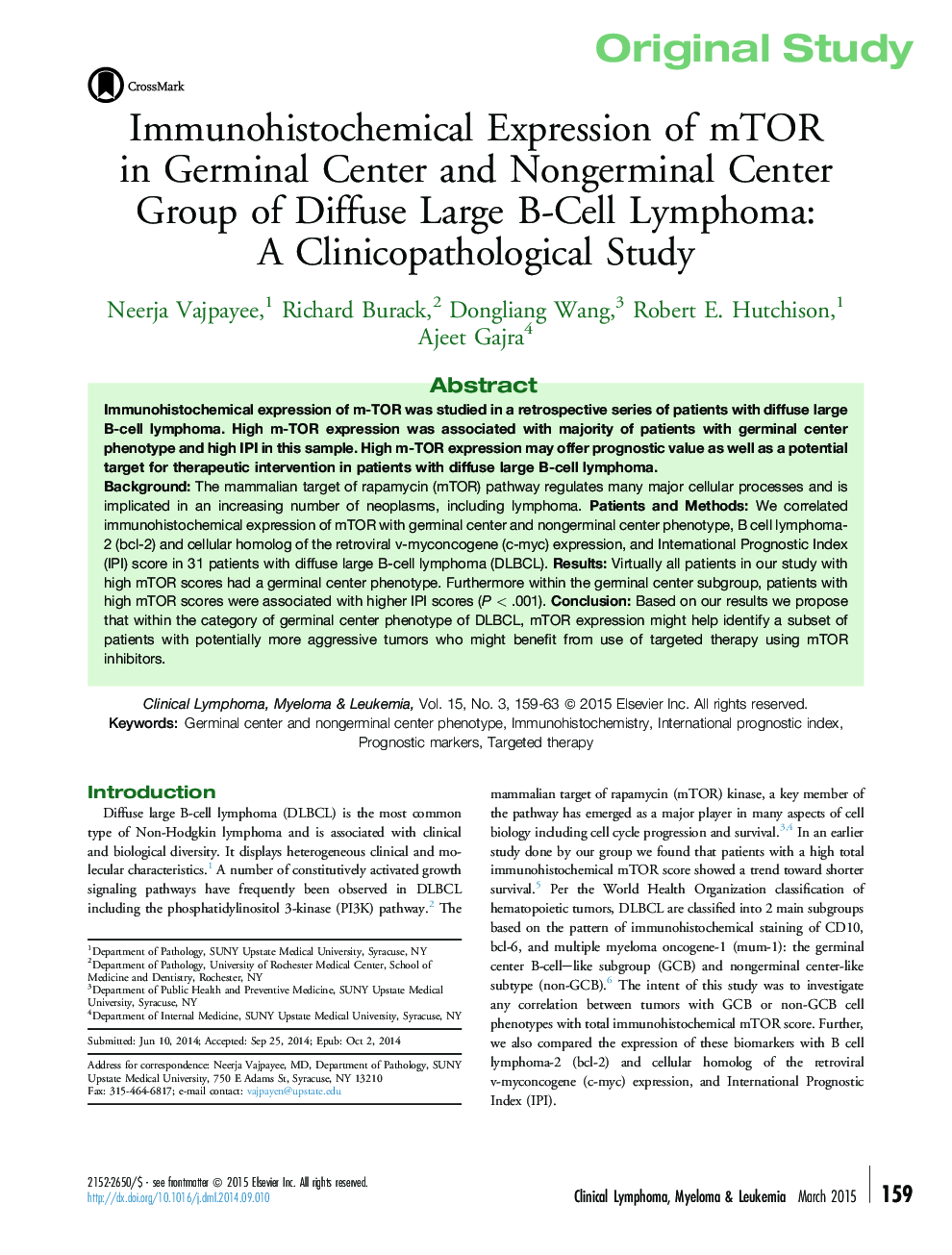| Article ID | Journal | Published Year | Pages | File Type |
|---|---|---|---|---|
| 2754262 | Clinical Lymphoma Myeloma and Leukemia | 2015 | 5 Pages |
BackgroundThe mammalian target of rapamycin (mTOR) pathway regulates many major cellular processes and is implicated in an increasing number of neoplasms, including lymphoma.Patients and MethodsWe correlated immunohistochemical expression of mTOR with germinal center and nongerminal center phenotype, B cell lymphoma-2 (bcl-2) and cellular homolog of the retroviral v-myconcogene (c-myc) expression, and International Prognostic Index (IPI) score in 31 patients with diffuse large B-cell lymphoma (DLBCL).ResultsVirtually all patients in our study with high mTOR scores had a germinal center phenotype. Furthermore within the germinal center subgroup, patients with high mTOR scores were associated with higher IPI scores (P < .001).ConclusionBased on our results we propose that within the category of germinal center phenotype of DLBCL, mTOR expression might help identify a subset of patients with potentially more aggressive tumors who might benefit from use of targeted therapy using mTOR inhibitors.
